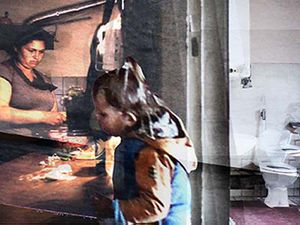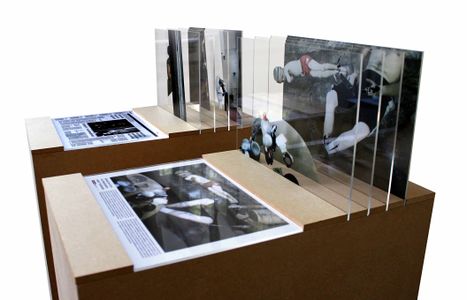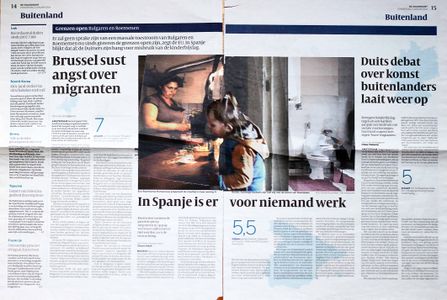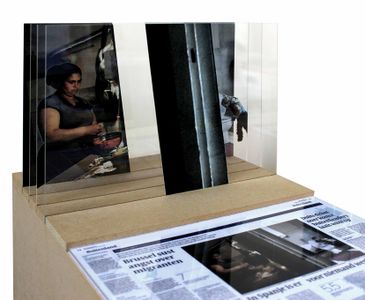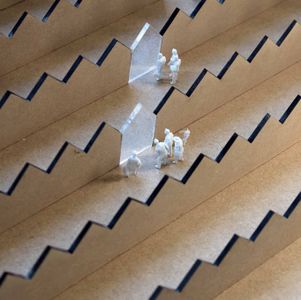The Aesthetics of Ethics
| The Aesthetics of Ethics | |
|---|---|
| Creator | Ana Luísa Moura |
| Year | 2015 |
| Bio | Ana Luísa Moura (PT) has a background in Architecture / Urban Planning and is currently exploring means of visual storytelling and strategic illustration. Her research focuses on typologies of portraying within media imagery, regarding in particular the instrumentalization of vulnerability and personal exposure. |
| Thumbnail | |
The Aesthetics of Ethics is a research based project on social documentary photography. It reflects on the way social concern gets to be visually communicated and on what this particular protocol of representation might say about citizenship, ethics or political consciousness. The installation addresses the topic from a point of view of social inter-surveillance and attempts to unfold the documentary format as a map of human value.
Thesis excerpt: The Aesthetics of Ethics – a study on social documentary photography
(…) The information on social matters must address the urgency of the topic, the extension of the problem and the moral integrity of the people involved. Exploitation of welfare benefits is a constant concern; many individuals appear to make no effort to work enough, try enough or present themselves well enough. The understanding that economical inequality goes far beyond the individual’s power appears to find its backdrop in an increased attention to individual’s personal effort. The Dutch TV program ‘Dubbeltje op Zijn Kant’ invites people with debt problems to openly share their privacy in order to get financial advice and ultimately help. The program gathers different profiles of trouble in order to address and illustrate a variety of moral values. Judgment upon it allows one restructuring of what is important or not in the management of everyday life. But essentially, what becomes clear is that everyone has a different seat to take and that the proper exercise of this order is achieved by public exposure and judgment. If one doesn’t know how to be poor, society can give him a hand. The public is invited to have an opinion on how these people dress, talk, clean their house or attempt to earn enough to live. Their condition is greatly their own fault, once they appear to lack reasoning capacities and life values to find their own way. Unemployment, debt, low income or irresponsible consumption, are not seen as the dramatic result of a sick economy, but as people’s own incapacity to deal with it.
(…) The amount of detail on the photograph and its subtle display is the core value of the social documentary format. The details in the picture must look casual and relate directly with the values of a potential public. Some of these values are the same since the XIX century: family structure, child care, father figure, housing conditions and hygiene. Other values add up to contemporary pictures and regard more specifically healthcare (obesity or sick outlook), addictions (smoking, drinking), stereotyped traits like tattoos and the ownership of material goods. When failures regarding these topics are visible in the photographs (and they always are) there is the inevitable belief that these people may not be worth society’s concern.

